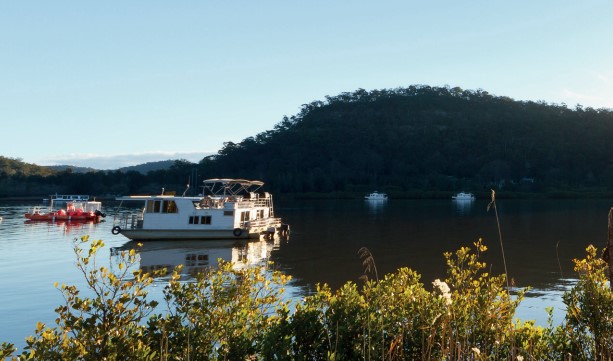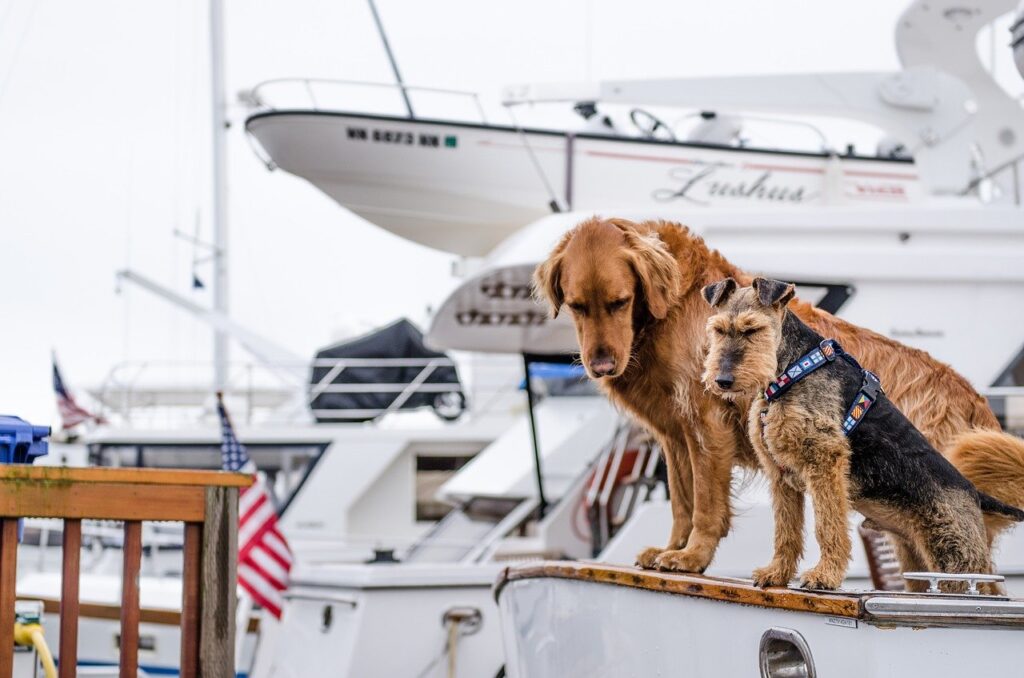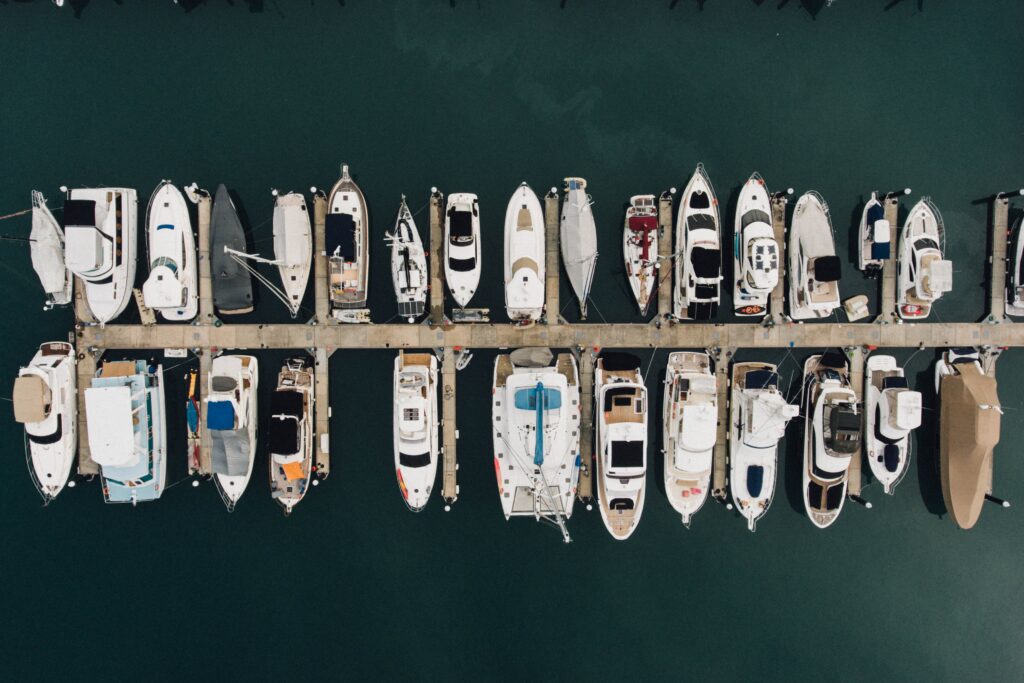Fire Safety on Boats

Safety On Board You’ve probably see pictures or even videos of a boat on fire. It certainly is not a pretty sight and one that quite correctly puts fear – or at least caution – into your heart. There is no doubt that the best approach requires a combination of prevention, detection and first line firefighting. Let’s be clear – if a fibreglass boat is seriously on-fire, then ‘abandon ship’ might be your only option. Never put yourself or others at risk Prevention requires a common-sense but methodical approach. Carry out a Fire Risk Assessment – identify what could go wrong; and what you can do to prevent a fire from ever starting. For example, an absolute no smoking policy is the best approach. Also, be very careful of those gas lighters that are used to light a gas ring – they can still have a flame or be hot when placed on a surface or in a drawer, possibly starting a fire. Detection is quite straightforward. There are many low-cost smoke and fire alarms on the market. (Carbon monoxide alarms are also very important.) They are all easy to fit. We have used industrial strength ‘Velcro’ to affix alarms without drilling walls or ceilings. They seem to hold even in choppy seas. Placement is of course important. You need to have one in every ‘room’ in the boat. Don’t assume that fires only start in the galley. First-line firefighting is more complex. Some basic rules apply. Obviously, a pan-pan or mayday (or dial 999 if VHF is not available) is required. To safely extinguish a fire you need to get to it very quickly. It follows, therefore, that you need an extinguisher (even if just a small one) in easy reach in every room that is likely to be occupied (cabins, galley, saloon etc.). Also, always leave yourself an escape route. One risk occurs if you sleep in a forward berth. If a fire starts in the galley, then this may block a possible means of escape. However, opening the forward escape hatch above the berth also has a risk – of encouraging the fire by allowing a draft of air to fan the flames. This reinforces the need to have an extinguisher close to hand. The galley should of course also have a fire blanket. Be sure you know how to use it correctly to avoid burns to your hands. There is, however, one serious, well recognised problem with the common powder type of fire extinguisher. If they have to be used, they make a truly horrendous mess. Unfortunately, they get into all the soft furnishings, they corrode electric and electronic connections, they are potentially toxic if breathed in, they act as a laxative (!!), they can be destructive of engines. The mess can only be safely cleared up using personal protective gear. Go Earth researched this problem and found two ranges of extinguishers (Firetool for inside spaces and Blazecut for the engine bay) that do not suffer from these issues.
Chartering a boat in Australia

A Trip on the Hawkesbury There are many ways to enjoy the delights of boating. The best way is to own your very own boat. However, we had a 5-week trip to Australia to visit family, and I could not bear the thought of 5 weeks with no boating. What were we to do? Obviously find a boat to hire. I discovered a 36 foot flybridge that we could rent for a day on the beautiful, meandering, Hawkesbury River. That sounded ideal. The whole family (wife, daughter, son-in-law and two grandchildren) could spend a day out on the river. I booked it. Fortunately, this went down well with my wife, especially as I forgot to mention the cost! On the day of our charter, we were greeted by the delightful couple who own the business. It was a reasonably spacious 36-footer flybridge. Old, but spacious, with all the facilities you needed for a day trip. We had the necessary safety briefing and were given the charts of the Hawkesbury, and then we were off. We decided on a relaxed journey up the river as far as we could in a day. This was what river cruising is all about. Relaxed, beautiful scenery, easy navigation, great weather, no tides to speak of, not over-crowded and plenty of sights to see. Along the river, the wreck of the HMAS Parramatta can still be seen against the shore line. It was launched in 1910, but in 1934 broke loose from its moorings and eventually sunk. We passed a number of islands, including the now-defunct Peat Island, which had variously been used as an asylum for drunks and for those with mental illnesses For about 10 miles of that journey, we were accompanied by the largest, longest swarm (or ‘smack’) of jellyfish I have ever seen. We passed many small communities on the river that literally had no roads to them. Their only transport was by boat. Indeed, even the post had to be delivered by boat, on the ‘postman’s ferry’. We eventually found a small sandy alcove along the way that looked great. We anchored off, checking carefully that the anchor seemed to be holding OK.We ferried ourselves in the small dinghy across to the sandy shore. The kids enjoyed the sand, clambering over rocks, and the picnic we had brought with us. All too soon it was time to get back onto the boat for the return journey. We checked. Yes, the boat was still there, firmly anchored. So, we took the dinghy back to the boat. As we approached what I will call its home port (i.e. the jetty), the owner came out in his dinghy to greet us. Although he had trusted us with his boat for the day, he apparently did not trust us to berth it. Very wise! He berthed the boat for us. The Lesson From This? If you get the opportunity to rent a boat while on holiday, it is worth considering. Note, however, that not all countries are as relaxed about this as Australia.
You Old Seadog

Dogs and Boating Wikipedia reliably informs us that ‘seadog’ can refer either to a sailor or a dog. Well, it occurred to me that many of us have actual dogs, of all breeds, shapes and sizes that come out on our boats, so a few words about them might be helpful. Some dogs do genuinely love being out on a boat and take to it like a fi sh to water (if that’s not mixing metaphors). Others are less sure or even nervous about the whole adventure. This article is intended to help dog owners acclimatise their dog to the boating life. Let’s start at the beginning. Walkies Most dogs are happy to go to a marina – even they can sense the excitement. However, some dogs don’t like walking along the pontoons or up or down (depending on the tide) a linking bridge. This is not a good start – before you have even got to the boat. I have seen owners trying to pull their small – but apparently quite powerful – dog by his lead along a pontoon. Even the offering of a tempting morsel of chicken would not get the dog to move. Whilst amusing for onlookers (almost as entertaining as watching someone trying to berth in nice gusty conditions . . .), it can present a real problem. Often the issue can be quite simple – the dog is uncomfortable with the gaps between the wood on the pontoon, or the patterns of holes in plastic pontoons. Their claws can get (painfully) caught, especially in plastic ones. Solution? Take it slow and steady. The first time you take your dog to a marina, have it walk just a few steps, and then get back on ‘dry land’. Reward its behaviour. Then try a little bit of a longer walk along the pontoon. Again, use positive reinforcement so that the dog enjoys the whole experience. Smelly Toys and Beds OK – let’s assume that you have now got the dog happily on your boat. He will be more comfortable if he has some of his toys and his usual bed on the boat. Don’t make the mistake of buying him a new bed for the boat – use his existing one with its existing smell! Yes, even if the smell is a bit strong – hopefully the sea air will take some of the smell away. Your Dogs First Boat Ride Get the dog used to the boat before you venture out on the water with him. Once he is happy with the boat, then he is far more likely to be happy going out on the water. Be gentle with your dog on his first trip out. The noise, the ‘strange’ rocking of a boat can all be very worrying for some dogs. We suggest that your first ride out with your dog should be on a very calm day, in a very relaxed manner. Act naturally, and give your dog a treat or two (or three . . .) What might work with some dogs, is to take them out in a small dinghy / RIB, so that he can put his paws on the tubes and look around the marina. We know that our own dog loves this. Note that dogs can actually get seasick, so watch out for signs of this. If the noise of a boats engines seems to be worrying your dog, then just slow down to a speed and noise that he is comfortable with. Over time, you can get him used to faster speeds and noisier engines! Also, ensure that your dog is hydrated and has enough water to drink. Safety First The RNLI quite correctly say of lifejackets “useless unless worn”. The same applies to dogs. Dogs should have a life-jacket of the correct size, and must wear it (despite their objections). Some dogs have a habit of jumping into water at the fi rst chance they get. Labradors are real experts at this (and also at drenching bystanders when they get out of the water and shake their fur). Note that dog life jackets are really just floatation devices – they don’t automatically inflate if (or when!) your dog jumps in the water. What they should have is a grab handle on the back so that you can safely (and unceremoniously) lift your dog out of the water. If you really want to embarrass your dog, lift him out with a boathook under the grab handle!! Which Breed? Different breeds react differently to the water. Naturally nervous dogs may not like their time on the boat, being concerned about strange noises and motion. Other breeds will love it. If you are thinking of getting a dog to go with your boating, then there is a useful article on the suitability of a few breeds. Please remember though, that a dog is for life and has to fit in with all aspects of your life. Success Treat your dog right, and train him well, and he will come to regard your boat as part of his home – even to the extent of guarding it and barking at strangers. He will be happy on your boat and look forward to his boating adventures with you. However, you need to train him not to bark loudly in the middle of the night when he is guarding your boat against real or imaginary noises! Responsible Dog Ownership Of course, owning a dog brings responsibilities as well. The following tips may help: Take ‘your’ dogs for plenty of walkies – but ALWAYS on a lead in the marina. Consistently, encourage your dog to wait until you are in a dog-walking area before relieving himself. If ever there is an accident, please clear it up immediately. I suggest always having a few ‘poop bags’ with you. If there are some doggie waste bins in the marina, please do use them. If there is any residue left, please wash it away thoroughly with the nearest water tap. If your children take the dog for
How To Choose The Right Marina

Marinas, Moorings and Berths OK, you now have the boat of your dreams. Just one tiny little challenge exists. Where do you put it? Most people decide on a marina, depending on the size of the boat. Given that we are talking about boating, you won’t be surprised to hear that marinas are not cheap! Their pricing is usually based on so much per metre LOA. Some marinas have a two-tier system, with lower per metre rates for smaller boats. Location, Location, Location The first practical criterion to consider is location. That can mean somewhere fairly local to you, or it can mean an idyllic spot in the sun – typically the Mediterranean for Britons. The great advantage of somewhere local is that you can easily get to your boat when you have the time, and the tides and weather are suitable. At Go Earth, we can use our database of marinas to tell you all the marinas within easy travelling distance.For others, having their boat in a sunny climate is of prime importance. You need to take account of flight availability and cost; and the different rules and regulations abroad. Types of Marinas The three main categories are: Coastal marinas River or lake marinas Canal marinas Coastal marinas tend to be large, have substantial facilities, are usually professionally run and can accommodate most types and sizes of boats. They are tidal and so marina access times need to be considered. They may be behind a lock or cill gate. The surrounding environment can be very varied – from the picturesque to the industrial. The main UK locations tend to be clustered around the south coast, north Wales and the Scottish lochs. River or lake marinas tend to be more modest iin size and often have fewer facilities. They may be tidal or nontidal. For example, the River Thames has both tidal and non-tidal sections; it is tidal up to Teddington Lock, and non-tidal beyond that. The largest lake in the UK is, of course, Windermere, with several marinas of varying sizes. It provides a peaceful, but limited, boating environment. However, even if your navigation skills are severely limited, it is difficult to get lost on Windermere! The 10-knot speed limit restricts the use of the lake for fast motorboats. The smaller river marinas may provide a more intimate, friendlier, more personal service. Some can be very picturesque indeed. These marinas are usually only suitable for smaller boats such as cabin cruisers, and smaller sports cruisers. Finally, we have canal marinas. These are part of the extensive canal network in the UK and are specifically for narrow boats. One feature is the culture of canal life – it is friendly, slower paced (indeed, for those used to powerboats, much slower paced!), with many residential occupants. Canalside pubs are a welcome feature of many canals. Learning how to use the numerous locks on the canals is an essential skill. Internet Access For many people, boating is a way of getting away from it all completely – and if that’s you, then feel free to ignore this section. For others (the author included, I am ashamed to admit!), continued internet access is crucial for business reasons. So, you need to check what the internet access is like at your marina – in your berth and even down below deck where the signal might be weakened. Berth Holders Associations Most marinas have a berth holders association that exists to represent the interests of berth holders, who, after all, pay a lot of money for their berths. Associations carry out activities such as putting on social events, organising ‘cruising in company’, putting pressure (if necessary) on the marina to improve facilities, running a website with useful information (such as tides and local pilotage), attendance at local boat shows, and gaining discounts from local chandleries, shops and restaurants in the locality. My local association at Conwy (www.cmbha.net) does all this, although associations can vary in how active they are. Anchors Away You might be wondering if there is any ‘objective’ way you can assess the quality of a marina. Well, there is an award scheme run by The Yacht Harbour Association (TYHA), called the Gold Anchor Award Scheme. It awards from one to five anchors to qualifying marinas, based on a variety of criteria. Marina Facilities Of course, there are many other factors to consider. You can email info@boatsearch.earth and we will be happy to provide advice.
